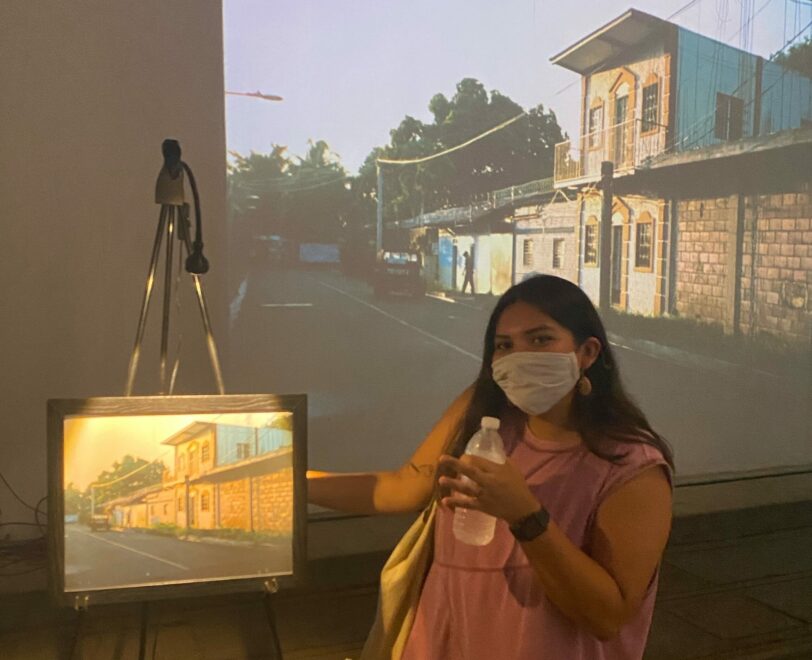News & Notes
Am I an artist?
In a society where identity plays a large role in how we connect to ourselves and how we are perceived by others, we are careful about our labels. A common pause that people took in the interviews for the Culture + Community in a Time of Transformation study was right before calling themselves an “artist.” It’s a label I have also struggled to latch onto, as someone who hesitates to identify in this way.
Understanding the parameters of art and artist has been an ongoing process, all the more emphasized through the national CCTT study and my own unraveling experiences. Despite knowing the basic definition of artist and knowing that it technically applies to me, my artist persona always felt too underdeveloped and awkward for public acknowledgment. Yes, I do creative and artistic things, but am I really an artist? It almost feels silly sometimes to call myself one when my work feels like it should exist only in my Notes app. The inspiration for most of my writing is my relationship to my family, my culture, and my race and ethnicity. A diary of sorts spun into poems that help me connect to myself, but I have difficulty trying to see how these poems can connect to a greater community. When the narrative has been overwhelmingly white American, my writing doesn’t feel like it will be relatable enough for society at large. So I have kept it to myself.
Participants in the CCTT study who shared their experiences with us also struggled to credit themselves for their creative and artistic endeavors. From soap making, to hair braiding, to coding, all of these beautiful processes are not just parallel to art, they are art, and we who create it, who craft it, who put time and energy and care into it, are artists. In listening to people discuss how they perceive and connect to art and culture, institutionally and personally, I found myself all too often nodding in agreement. In the 50 interviews we had with Black and African American people, the relationship between creative practices and connecting to oneself and others became increasingly apparent, and even helped me accept myself as an artist. To be an artist you shouldn’t need external actors to validate you, yet we often seek it. The report, which you can read here, digs deeper into how this relationship between connection to oneself and others through art, is supported, or not, by arts and culture organizations.
Much of my slow acceptance of the label “artist” has been the result of me acknowledging that my art comes from a narrative that isn’t highlighted in art and culture institutions. Although I’ve had the privilege of having amazing art and culture organizations at my fingertips my whole life (thank you Washington, D.C.), not one of them has felt like a space I could see myself. Until I learned that art isn’t confined to these well-funded, predominantly white spaces, and my art has validity and value even if it doesn’t fit the current narrative, even if it’s only for myself. Many of the participants measured the value of their art on its ability to make them feel better, something that doesn’t require validation from others.
When our art does leave the warmth of our homes, we join the ranks of other marginalized artists fighting for a truly representative and inclusive art space. One of the participants from the CCTT interviews emphasizes the importance of the BIPOC artist community, “The Art space can be very elitist and hierarchical. [Curator AJ Girard] wanted to shatter the notion that keep artists separate. I’m this type of artist, they’re that type of artist. Ultimately, we are all Black artists and Mexican artists, and we are trying to penetrate society. We are trying to shatter the glass ceiling within this space.” They point a critical finger at art spaces for being exclusionary, and at the disruptive and necessary role that BIPOC artists play in restructuring art spaces.
We are artists, all of us, no matter what medium we use to share our stories. We are changing the art space to embrace all our narratives and experiences. As these spaces continue to expand and change, I hope that art and culture institutions commit to listening and evolving. They have the responsibility of representing art and culture to society, but have done so in a way that doesn’t represent all art and all artists.
Am I an artist? Let’s work to eradicate this question.
Do you identify as an artist, or have you struggled to identify as one? Send me an email; I’d love to hear about your experience.
Photo: Camila displays a piece of her artwork recently presented at an exhibit at Dupont Underground.

